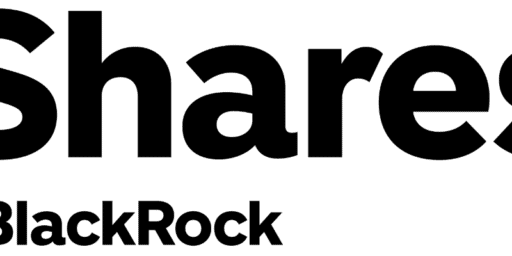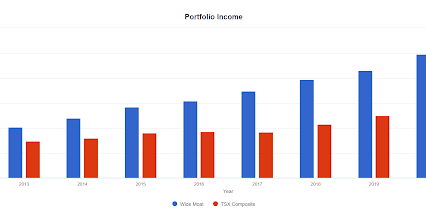CCPC Taxation: Canadian Corporations for Small Business Owners
I’ve been getting a lot of questions recently in regards to Canadian corporations and taxes for small business owners that have a CCPC (Canadian-Controlled Private Corporation).
Most of these inquiries want seemingly simple questions answered – something along the lines of, “Ok, so if I made this much profit in my company this year and I don’t want to use the money to expand my operations, should I take the money out of the company as a dividend, pay myself a salary, or keep it in the company – and maybe invest it within the corporate account – so that I don’t have to pay as much taxes? Oh – and do I get the small business tax deduction my friend told me about?”
Questions like this one are more complicated than they first appear, and if you want to make a truly informed decision about your Canadian small business then you need to understand CCPC tax rates and Canadian corporate taxation in general.
In other words, if you want to figure out how to keep as much of your company’s profits as possible – and to get it into your personal spending account – then we have to nail down how different types of tax rates work in Canada.
If you want personalized help with any of this stuff you can check out our best financial advisors in Canada article for more information about Jason Heath. Jason’s company, Objective Financial Partners does a ton of work with Canadian small business owners and knows all the ins and outs of CCPC taxes, tax deductions, and balancing your personal finances alongside your company’s cash flow.
Over the next couple of weeks we’ll get more in-depth on the specific pros/cons of what to consider when thinking about dividends, salary, and other options – but for today, let’s sink our teeth into what a CCPC actually is, how CCPC taxes differ from tax rates for other types of corporations in Canada, and why $500,000 in profits is a key threshold to consider for any CCPC owner.
What Is a CCPC?
Ok, before we get into really nerdy ways to best use Canadian corporate tax rate advantages, let’s clearly state the definition of a Canadian-Controlled Private Corporation – usually called a CCPC – and determine if a CCPC means the same thing as when we say “small business”.
If you run a small business in Canada you have to make a decision to run it as a:
- Sole proprietorship
- Partnership
- Corporation
A CCPC is the most common type of corporation for small business owners, should they choose to incorporate. You can read the last part of this article for more info on if you should incorporate or not.
It’s important to understand that many successful business owners run their companies as sole proprietorships or partnerships for decades. They never transition their small business to a corporation, their profits are treated very similarly to basic “T4 income” (as if they earned the income working for someone else) and their taxes are kept relatively simple. You don’t NEED to incorporate. In fact, it can be a mistake to do so prematurely due to the costs (legal, bookkeeping, accounting) and complexity of incorporation.
That said, deciding to run your small business as a corporation offers many potential tax benefits and generally gives you more flexibility when it comes to controlling the specific amount of taxable income that you declare each year (and thus control the amount of tax you pay for a specific period of time).
In a perfect world, our government(s) want lots of Canadians to start their own businesses, create new inventions, new services, and new jobs. Entrepreneurs and business owners are the lifeblood of any economy, and consequently, there are some nice little advantages built into owning a CCPC.
The government doesn’t want these advantages to go to anyone other than Canadians, so they have a very precise definition of what a company needs to be in order to qualify as a CCPC. All of the following requirements need to be met in order to satisfy the definition of a CCPC:
- It is a private corporation. (This means that it is not listed on a stock exchange.)
- It is a corporation that was resident in Canada and was either incorporated in Canada or resident in Canada from June 18, 1971, to the end of the tax year.
- It is not controlled directly or indirectly by one or more non-resident persons. (Note that this refers to residency and NOT simply Canadian citizenship. And the threshold for control is 50%, so at least 50% of the voting shares for the corporation must be held by Canadian residents.)
- It is not controlled directly or indirectly by one or more public corporations (other than a prescribed venture capital corporation, as defined in Regulation 6700 of the Income Tax Regulations).
- It is not controlled by a Canadian resident corporation that lists its shares on a designated stock exchange outside of Canada.
- It is not controlled directly or indirectly by any combination of persons described in the three previous conditions.
- If all of its shares that are owned by a non-resident person, by a public corporation (other than a prescribed venture capital corporation), or by a corporation with a class of shares listed on a designated stock exchange were owned by one person, that person would not own sufficient shares to control the corporation.
- No class of its shares of capital stock is listed on a designated stock exchange.
Essentially, a CCPC needs to be majority-owned and operated by Canadian residents, and it needs to be registered as a corporation within a Canadian province or territory.
While a CCPC is the most common option, other types of Canadian corporations include “other private corporations” and “public corporations”. There are also sub-categories of these corporations. But for our purposes, let’s just say these “other” corporate options are for non-Canadian residents and large companies that are listed on stock exchanges.
Corporate Taxation vs CCPC Taxes vs Personal Taxes in Canada
Most people are vaguely aware that the Canadian government has special tax rates for corporations, and then other tax rates for individuals. While it’s a good starting point to understand, the actual tax rate that a corporation pays depends on a few factors.
Small business owners in Canada need to understand both personal taxes and corporate taxes, because at some point they need to take money out of the corporation. Money needs to get into your personal accounts in some way (usually dividends or salary) because generally your company is not supposed to pay for life’s daily expenses like your groceries, mortgage, or family holiday.
We’re going to look at how to best set up your small business-to-personal-spending cash flow and how to best balance out your corporate taxes and personal taxes as a business owner.
Corporate Tax Rates for CCPCs and the $500,000 Rule
Most small business owners in Canada really only need to know about tax rates for CCPCs and non-eligible dividends.
Just to provide context: Corporations that are not CCPCs generally pay a net federal corporate tax rate of 15%. This tax rate is arrived at in a confusing way that starts with a federal corporate tax rate of 38%, and then factors in a 10% federal income tax abatement and a 13% general tax reduction. They also pay provincial corporate taxes at varying rates ranging from 8 to 16%.
Once those corporate taxes are paid, eligible dividends can be paid to shareholders of the corporation from those after-tax profits. These will be different from the non-eligible dividends that you will get as a small business owner with a CCPC. An example of these types of eligible dividends would be the dividends you get in your brokerage account when you invest in a big Canadian company like RBC or Bell.
Ok, so can we say that Canadian small businesses are the same thing as CCPCs and that CCPCs effectively pay 9% federal tax while non-CCPC corporations pay 15% tax?
No… it’s not that simple.
The government has decided that the Canadian small business tax rate is only applied to a corporation’s profit of less than $500,000 in taxable income.
A few notes on this $500,000 figure:
- Remember that it’s $500,000 in taxable income (re: profit) and NOT revenues.
- This $500,000 figure is income from operations (business activities) and does not include passive income (for example, you opened up a corporate investment account with a Canadian discount brokerage and started buying stocks or GICs).
- The $500,000 line has not gone up with inflation over the years – thus inflating many Canadian small businesses into a higher corporate tax bracket.
So – if your CCPC made $500,000 or under – then yes – your small business tax rate for the federal government is 9%. You can add your provincial tax rate (see the table below) and you’re done.
BUT – if your CCPC made over $500,000, then you have to worry about two tax rates. The small business tax rate and then the general corporate tax rate of 15% that we just outlined above.
To Sum Up: The phrase “small business” can mean a lot of things. It can refer to a partnership or a sole proprietorship for example. If you heard about something called the “small business tax deduction” that is in reference to CCPCs on their first $500,000 of earnings.
If you have decided to incorporate your small business, chances are that you will meet all the criteria for a CCPC that I mentioned earlier, and that your corporate tax rate will be 9% (federal) and then an additional 0-3.2% provincially (see below).
Now – there are also rules around passive income (if you choose to invest within your corporation or a holding company) and those rules could affect your status as a small business as well. But we’re going to tackle those passive income rules another day.
Provincial CCPC Corporate Tax Rates
| Province/Territory | Business Limit Threshold | Provincial/Territorial Small Business Tax Rate | Combined Small Business Tax Rate |
| Federal | $500,000 | 9% | 9% |
| Ontario | $500,000 | 3.20% | 12.20% |
| Quebec | $500,000 | 3.20% | 12.20% |
| Newfoundland & Labrador | $500,000 | 3% | 12% |
| Nunavut | $500,000 | 3% | 12% |
| New Brunswick | $500,000 | 2.50% | 11.50% |
| Nova Scotia | $500,000 | 2.50% | 11.50% |
| British Columbia | $500,000 | 2% | 11% |
| Alberta | $500,000 | 2% | 11% |
| Northwest Territories | $500,000 | 2% | 11% |
| Prince Edward Island | $500,000 | 1% | 10% |
| Yukon | $500,000 | 0% | 9% |
| Manitoba | $500,000 | 0% | 9% |
| Saskatchewan | $600,000 | 0-2% | 9% |
But What About If My CCPC Makes More than $500,000?
First off – congrats – you’re a very successful business owner!
Once your CCPC (which probably isn’t that “small” anymore if you’re making more than a half mill in profits every year) makes more than $500,000, you’re still going to get the benefit of that lower tax rate on the first $500,000 in profits that you make each year.
For every dollar above that amount, you’re going to pay the general corporate tax rate that we discussed before. The effective federal tax (after all that weird accounting) is 15%, and then you have to add the provincial taxes as well. Below is a chart showing the provincial general corporate tax rates – as well as the combined federal + provincial tax rate.
| Province/Territory | 2023 General Corporate Tax Rate | Combined Provincial and Federal 2023 General Corporate Tax Rate |
| Federal | 15% | 15% |
| Ontario | 11.50% | 26.50% |
| British Columbia | 12% | 27% |
| Alberta | 8% | 23% |
| Manitoba | 12% | 27% |
| New Brunswick | 14% | 29% |
| Prince Edward Island | 16% | 31% |
| Nova Scotia | 14% | 29% |
| Newfoundland & Labrador | 15% | 30% |
| Nunavut | 12% | 27% |
| Northwest Territories | 11.50% | 26.50% |
| Yukon | 12% | 27% |
| Saskatchewan | 12% | 27% |
| Quebec | 11.50% | 26.50% |
Example: If Olga’s Ontario-based CCPC made a business profit (no investment income within the corporation to worry about) of $750,000 last year, her corporate taxes would be calculated as follows:
$500,000 x 12.2% = $61,000
$250,000 x 26.5% = $66,250
Total Taxes: $127,250
The good news for Olga in this situation is that because she paid that higher general corporate tax rate on her last $250,000 in profits, she can choose to pay herself a dividend with that money and those dividends will be eligible dividends (meaning they will be eligible for a larger tax credit). Non-eligible vs eligible dividends will make more sense after you read below.
Tax Integration for CCPCs
The basic idea that the tax gurus at the CRA start with when they look at business taxes is called “tax integration”.
Tax integration is a concept that boils down to the goal of taxing a Canadian business owner as equally as possible whether they pay themselves a salary or pay themselves through dividends.
Let’s look at a basic example (that I have simplified a bit): A corporation has one shareholder – Olga the Owner. Olga’s corporation made $100,000 in profits. Olga wants to take all of the profit out of the corporation in order to pay for life.
If Olga pays herself $100,000 in salary, the company doesn’t owe any tax (because the salary is an expense – so Olga’s corporation now has $0 in profits). But – Olga would owe about $26,000 in personal income tax.
Now, if instead, Olga decided she wanted to pay herself in the form of a dividend (with no salary), then the corporation has to pay corporate tax first. Consequently, the two layers of government take $12,000 in corporate taxes, leaving Olga with $88,000 in dividend income. Olga’s CCPC would pay her $88,000 using non-eligible dividends. Olga would now owe about $14,000 in personal income taxes.
In each case, Olga would owe about $26,000 in total tax, and then be left with $74,000 to spend or invest in per personal accounts as she saw fit. Each province has different tax rates for corporations, salary, and ineligible dividends – so the specific results will differ a bit from province to province.
The concept of tax integration will stay the same, and in Olga’s case, she’ll end up paying pretty close to the same amount of taxes (ignoring CPP) whether she takes out her corporate profits in the form of salary or dividends.
There may be slight advantages or disadvantages at different levels of income in different provinces or territories. And it may also be impacted by your available tax deductions and credits. But the point is there is not a significant difference on a net-net basis whether you take salary or dividends. That is the benefit of working with a corporate tax expert.
We’ll get into the specific applications a bit more next week (and there are many more considerations for Olga than the simple picture I just painted). For now, I want to flesh out the math behind how tax integration works for taking dividends from a CCPC.
And I want to warn in advance that it is a bit confusing.
Just try to keep in mind, the CRA’s goal here is to even out the taxes no matter if an owner takes salary or dividends. Our goal on the other hand is to figure out if there is a small advantage for us business owners in pursuing one path instead of the other.
If we assume that our CCPC has an active operating business income of $500,000 or below for the year, then our corporation will pay the lower corporate tax rate we discussed above. Because that tax rate is lower, all of the dividends that the company pays out will be non-eligible dividends (as opposed to eligible dividends, which are paid out when corporate income is taxed at the general corporate tax rate).
Once those non-eligible dividends hit your personal account, you’re going to file personal taxes for the year and the Canada Revenue Agency (CRA) is going to calculate how much tax you owe by doing two things to it:
1) They are going to “gross up” the amount of non-eligible dividends that you received.
2) They are going to apply a dividend tax credit.
These two processes are done at both the federal and provincial levels.
The first process is going to make your taxable income look larger, the second process is going to reduce the amount of taxes that you owe by a specific amount. It’s a complicated way to achieve the intended goal of tax integration that we discussed above. It is like grossing up your income to the original pre-tax corporate profit and then giving you a tax credit roughly equal to the corporate tax already paid.
CCPC Taxes and the Small Business Tax Credit
Let’s look at Olga’s example for 2023:
- Olga started with $100,000 in corporate profit.
- The corporation then paid 12% in taxes.
- Olga withdrew the rest of the money ($88,000) using non-eligible dividends.
- Olga’s $88,000 will now be grossed up by 15% for her federal taxes – so for a minute (before we apply the tax credit) – the government is essentially going to say that Olga owes tax on $101,200 ($88,000 x 1.15).
- Before Olga gets too upset, the federal government is essentially going to say, “Don’t worry Olga, we also have a tax credit for you. We’re going to give you back 9.0301% of that grossed-up amount that we just calculated. Here’s $9,138 off of your tax bill.” ($101,200 x .090301)
- And then – just to reiterate – Olga would go through the same non-eligible dividend gross up + tax credit process for her provincial taxes as well (rates differ from province to province).
- If Olga lived in Ontario, she would owe $17,811 in federal taxes and $7,296 in provincial taxes BEFORE the basic personal tax exemption and her non-eligible dividend tax credit were factored in.
- Olga adds up her Canada personal tax exemption ($2,250), her Ontario personal tax exemption ($599), her federal dividend tax credit ($9,138), and her provincial dividend tax credit ($3,022).
- Once Olga subtracts her tax credits, she ends up with a total tax bill of $11,124 (fed: $6,423, prov: 3,951 + $750 Ontario Health Premium). She gets to put $76,876 in her pocket after taxes, and has a personal average tax rate of 12.64%.
- Note: This very simple example assumes that Olga ONLY makes money from non-eligible dividends and no other type of income.
I know – that’s a lot of steps.
But, things are going to get even more complicated next week when we look at different considerations for small business owners such as CPP contributions, RRSP contribution room, and various types of income splitting opportunities.
Before we get too complicated on a personal level, I wanted to really nail down what the heck was going on with eligible vs non-eligible dividends and how CCPC tax interacts with your personal tax.
Tune in next week for a detailed look at how all of these considerations could affect your personal situation as a CCPC small business owner. But before we change the channel…
CCPC vs Sole Proprietorship – Pros & Cons
I assume that most folks reading this article will already have incorporated (or else you quit reading at the top and said, “Forget this complicated incorporation stuff, I’m going to stick to a sole proprietorship and basically pretend as if my small business profits are the same as if I earned money at a job working for someone else.”)
This is probably worth another post all on its own, but for now, I’m going to leave you with this quick comparison of CCPC benefits vs drawbacks relative to leaving your company as a sole proprietorship.
| CCPC | Sole Proprietorship | |
| Liability | Limited liability for shareholders. You can only lose the assets that are in the corporation – not personal assets. | Unlimited liability, meaning personal assets are at risk if the business is sued. |
| Taxation | Lower tax rate on the first $500,000 of active business income due to small business deduction. | Income is taxed at the individual’s personal income rate, which is usually higher than corporate tax rates. |
| Income Splitting | Potential for income splitting through salary or dividends to family members. Potential to access the Lifetime Capital Gains Exemption for family member shareholders (see below). | Potential income splitting for salary paid to family members. |
| Capital Gains Exemption | Access to the Lifetime Capital Gains Exemption (LCGE) for qualifying small business corporate shares. This means that if you and your spouse co-own a CCPC, you could sell it for $2 million – and keep every penny tax free. Kids can qualify as well. The sale has to be a share sale (as opposed to an asset sale) but this is often a very important consideration. | Not applicable. |
| Retirement Savings | Access to Individual Pension Plans (IPPs) and Retirement Compensation Arrangements (RCAs). | Sole proprietors can contribute to RRSPs, but do not have access to IPPs or RCAs. |
| Succession Planning | A corporation can continue to exist beyond the owner’s death, allowing for easier succession planning. | The business ceases to exist upon the owner’s death, complicating succession plans. |
| Income Smoothing | Can retain earnings within the corporation to smooth out personal income. This smoothes out the “high income” and “low income” years so that tax is minimized. | Income is taxed in the year it is earned, limiting opportunities for income smoothing. |
| Operational Complexity | Higher operational and compliance costs, including annual filing and potential for more complex accounting. | More simple bookkeeping and tax filing requirements. Plus, it costs a few thousand bucks up front to get an accountant or a lawyer to set up a corporation for you. Sole proprietorships are much easier and less costly to start up. |
| Getting Money to Expand (Raising Capital) | Relatively easy to raise capital through the sale of shares. | Harder to raise capital. Often dependent on personal loans or credit. |
| Mortgage Qualification | Might be more challenging to qualify for mortgages through a corporation as you often have to demonstrate a consistent salary level. | Often easier to get a mortgage as you can point to simple, taxable income on your tax return. |
| Business Losses | Can not write off business losses against personal income (only future or past business income). | Business losses can be written off against other income. |
I've Completed My Million Dollar Journey. Let Me Guide You Through Yours!
Sign up below to get a copy of our free eBook: Can I Retire Yet?











That was a great article. My accountant has been trying to explain how this works for years and I only semi-understood it and trusted him to advise me on how to pay the lowest overall tax (corporation + personal). Thank you for so clearly explaining how this works.
Lisa – Thank you so much! These type of comments really help the fingers keep typing! You’ll definitely want to catch the next few articles I write if you thought this one was worth it.